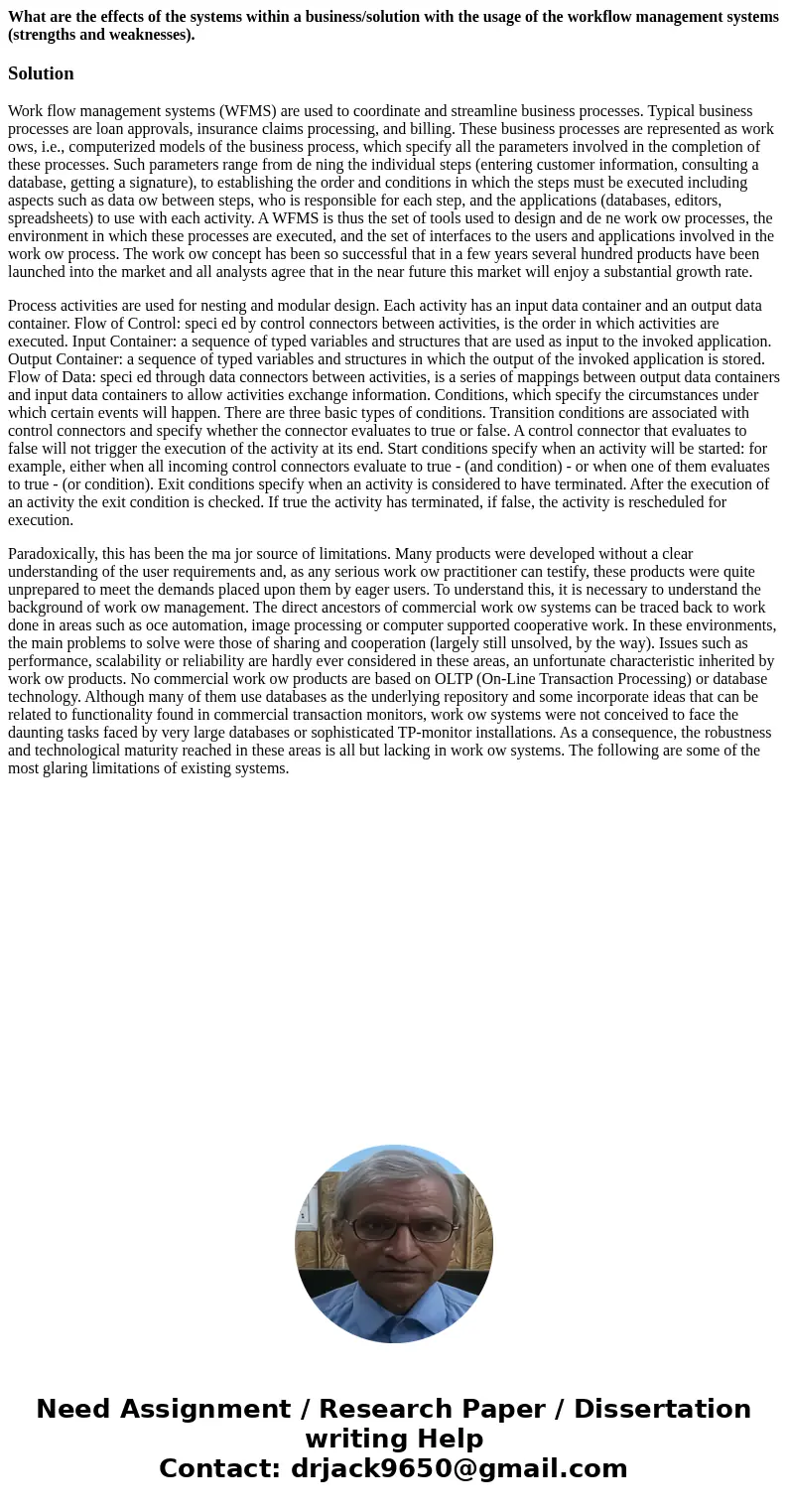What are the effects of the systems within a businesssolutio
What are the effects of the systems within a business/solution with the usage of the workflow management systems (strengths and weaknesses).
Solution
Work flow management systems (WFMS) are used to coordinate and streamline business processes. Typical business processes are loan approvals, insurance claims processing, and billing. These business processes are represented as work ows, i.e., computerized models of the business process, which specify all the parameters involved in the completion of these processes. Such parameters range from de ning the individual steps (entering customer information, consulting a database, getting a signature), to establishing the order and conditions in which the steps must be executed including aspects such as data ow between steps, who is responsible for each step, and the applications (databases, editors, spreadsheets) to use with each activity. A WFMS is thus the set of tools used to design and de ne work ow processes, the environment in which these processes are executed, and the set of interfaces to the users and applications involved in the work ow process. The work ow concept has been so successful that in a few years several hundred products have been launched into the market and all analysts agree that in the near future this market will enjoy a substantial growth rate.
Process activities are used for nesting and modular design. Each activity has an input data container and an output data container. Flow of Control: speci ed by control connectors between activities, is the order in which activities are executed. Input Container: a sequence of typed variables and structures that are used as input to the invoked application. Output Container: a sequence of typed variables and structures in which the output of the invoked application is stored. Flow of Data: speci ed through data connectors between activities, is a series of mappings between output data containers and input data containers to allow activities exchange information. Conditions, which specify the circumstances under which certain events will happen. There are three basic types of conditions. Transition conditions are associated with control connectors and specify whether the connector evaluates to true or false. A control connector that evaluates to false will not trigger the execution of the activity at its end. Start conditions specify when an activity will be started: for example, either when all incoming control connectors evaluate to true - (and condition) - or when one of them evaluates to true - (or condition). Exit conditions specify when an activity is considered to have terminated. After the execution of an activity the exit condition is checked. If true the activity has terminated, if false, the activity is rescheduled for execution.
Paradoxically, this has been the ma jor source of limitations. Many products were developed without a clear understanding of the user requirements and, as any serious work ow practitioner can testify, these products were quite unprepared to meet the demands placed upon them by eager users. To understand this, it is necessary to understand the background of work ow management. The direct ancestors of commercial work ow systems can be traced back to work done in areas such as oce automation, image processing or computer supported cooperative work. In these environments, the main problems to solve were those of sharing and cooperation (largely still unsolved, by the way). Issues such as performance, scalability or reliability are hardly ever considered in these areas, an unfortunate characteristic inherited by work ow products. No commercial work ow products are based on OLTP (On-Line Transaction Processing) or database technology. Although many of them use databases as the underlying repository and some incorporate ideas that can be related to functionality found in commercial transaction monitors, work ow systems were not conceived to face the daunting tasks faced by very large databases or sophisticated TP-monitor installations. As a consequence, the robustness and technological maturity reached in these areas is all but lacking in work ow systems. The following are some of the most glaring limitations of existing systems.

 Homework Sourse
Homework Sourse